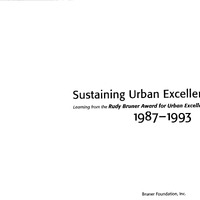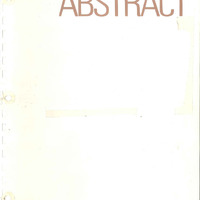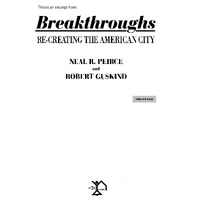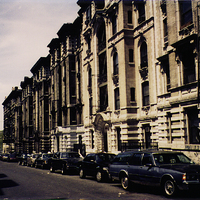Tenant Interim Lease Program
Item
Linked resources
| Title | Class |
|---|---|
 Sustaining Urban Excellence: Learning from the Rudy Bruner Award for Urban Excellence 1987-1993 Sustaining Urban Excellence: Learning from the Rudy Bruner Award for Urban Excellence 1987-1993 |
Text |
 Tenant Interim Lease Program application Tenant Interim Lease Program application |
|
 Tenant Interim Lease Program case study Tenant Interim Lease Program case study |
- Title
- Tenant Interim Lease Program
- Description
-
1989 Rudy Bruner Award for Urban Excellence - Gold Medal
New York City’s Tenant Interim Lease Program was created as a way for renters to become cooperative owners of their apartments in abandoned low-income buildings. Initiated in 1978, the program was a response to the housing crisis that resulted from landlords abandoning low-income housing units that became too expensive to repair and maintain. Renters in city-owned buildings can form a tenant association and receive training and technical assistance from the Urban Homesteading Assistance Board (UHAB), which oversees the program under the city’s Department of Housing Preservation and Development. Together tenants manage the building and eventually transition to cooperative ownership.
Unlike other city housing programs, the Tenant Interim Lease Program depends upon tenant initiative and persistence, making it a truly empowering experience for those who participate. Self-help is a cornerstone of the program, and participants develop valuable work and leadership skills through the process. Over 240 buildings participated in the first year, with 500 in process at the time of application, making it the city’s largest grassroots low-income housing program. - Coverage
- New York, NY
- Date
- 1978
- Subject
- low-income housing
- cooperative housing
- urban homesteading
- tenants' associations
- Contributor
- New York City Department of Housing Preservation & Development
-
Urban Homesteading Assistance Board
- Contributor
- en Developer
-
678 St. Nicholas Avenue Housing Development Fund Corporation
- Contributor
- en Community Group
-
110 East 176 Street Housing Development Fund Corporation
- Contributor
- en Community Group
- Rights
- This digital collection is made available for research and educational purposes. Researchers are responsible for determining copyright status, and securing permissions for use and publication of any material. Copyright for items in this collection may be held by the creators, their heirs, or assigns. Researchers are required to obtain written permission from copyright holders and the University Archives prior to reproducing or publishing materials, including images and quotations. For inquiries about reproduction requests and permissions, please contact the University Archives at: http://library.buffalo.edu/archives/.
